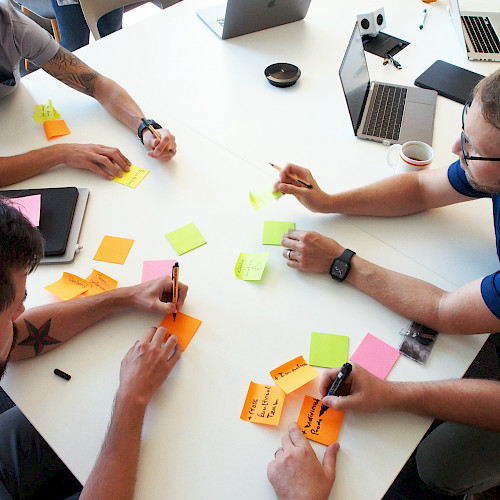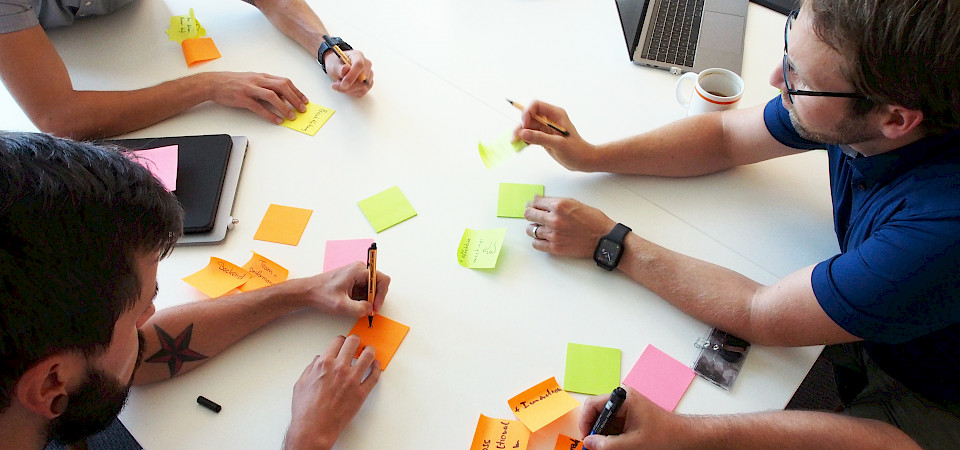
How we further develop the staffing of our software projects across all stakeholders
Resource planning at jambit takes care of the optimal staffing of our software projects. And there is a lot to do: customer needs and development goals of our employees have to be reconciled with each other, and at the same time the project staffing process has to be adapted to the changing framework conditions in the best possible way. That is why we added a special position to our HR team more than a year ago. We meet jambitee Dr. Julia Ebert, HR Specialist Resource Planning, who is responsible for planning and continuously developing the staffing of our software projects.
How important is resource planning of staffing in software development and in jambit's project business?
Selecting the right developers for our customized software projects is a key value driver. In software development, the technologies used are constantly changing and projects are becoming more and more complex. This affects not only languages and frameworks, but also procedures and processes. A project staffing process must take these developments into account. At the same time, "soft" factors must be considered in addition to technical and methodological skills. In an agile development process, it is essential for the project success that the team functions optimally. In our projects, university graduates and analytical lateral entrants from research encounter pragmatic and experienced developers. We regularly ask ourselves who works together pretty well and who might not be such a fit? To ensure matching team constellations, the people involved are also in constant exchange with each other across our business divisions. The interface is the central resource planning, which bundles and raises the knowledge of all participants on project specifics and employee characteristics. This enables us to respond flexibly to customer requirements and employee development goals throughout the company.
How does resource planning of staffing support the personal development of our employees?

At jambit, resource planning is part of our human resources division. This means that recruiting, personnel development, and resource planning work closely together. We accompany jambitees throughout their entire development and support them in pursuing their professional goals. At jambit, there are no fixed career paths. Our software developers plan their careers individually, e.g. in semi-annual appraisal meetings with their manager. In addition to the associated training priorities, development goals are also agreed upon with regard to future project assignments. Resource planning and staffing aims to support the jambitees with attractive and suitable project assignments. jambitees can develop in technological focal points, working in broader areas as flexible all-rounders, and take on new roles as requirements engineers or project managers. Currently, for example, we experience an increased interest in Ops topics, both on the customer side and among our employees. By taking a holistic, cross-divisional view of such trends in central resource planning, we can respond to them in a targeted and flexible manner. For example, we complement targeted recruiting activities with training initiatives that lead to relevant cloud certifications. In addition to external recruiting activities, internal training initiatives can also be triggered. One example is our "jambitees4Ops" initiative. We have taken the high project demand for platform developers as an opportunity to also look internally for jambitees who want to develop further and to work in this area.
How does jambit develop and refine resource planning and staffing?
To further develop the process around the staffing of our software projects, we work with Sociocracy 3.0, an approach to agile organizational development. Representatives from all stakeholder groups organize themselves in the resource planning process – from the CEOs to project staff and managers to sales and HR. The representatives change at regular intervals so that different individuals participate in the process and work on the iterative-incremental further development of resource planning and staffing. This allows us to adapt to changing conditions and, for example, to take company growth, changing customer requirements, and employee needs directly into account during developing the processes.
How to keep track of all the skills among 350 employees?

A decisive success factor in resource planning is "the knowledge about the knowledge" of our jambitees. To not exclusively relying on implicit knowledge, we have decided to use a tool to obtain the most complete and up-to-date picture possible of our employees' skills.
However, it is not only essential for resource planning and staffing to have an overview of who uses which technologies and languages. Be strongly believe that employees of a networked organization should be able to share their knowledge with each other without major hurdles. We are also convinced that those who encounter the skills of jambitees most often in their daily work are the ones who can best evaluate them. That is why we started looking for a tool that supports the jambitees in documenting their skills and to have them confirmed by their colleagues through "endorsements". We have intensively studied the market and tried different tools, but we realized that we needed customized software. And which is the best customized software? The one we develop ourselves! The result is "jamboree"; a lean, user-friendly tool from jambitees for jambitees.
We will present the process of product development, from the idea to a usable MVP, soon our website.

